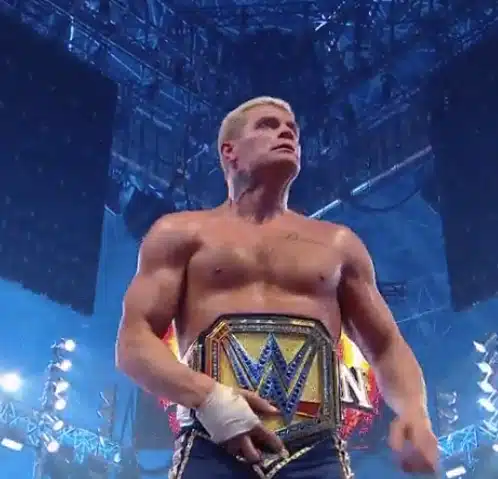Ring psychology transforms athletic competition into compelling theater through sophisticated storytelling techniques that manipulate audience emotions. Wrestling narratives follow classical three-act structures, establishing stakes and character motivations before escalating tensions through matches and unexpected twists. Wrestlers function as both athletes and directors, utilizing physical storytelling through selling techniques, body language, and tactical sequences that create believable consequences. Heroes and villains operate within clear moral frameworks while external storylines integrate seamlessly with in-ring action to produce memorable dramatic moments that resonate beyond individual contests.
The Architecture of Wrestling Narratives: Building Beginning, Middle, and End
Wrestling promotions construct their storylines using the same fundamental narrative architecture that has driven compelling storytelling for centuries. The three-act structure provides a framework, consisting of a beginning, middle, and end, each serving distinct purposes in audience engagement.
The beginning establishes stakes, characters, and motivations through promos and character vignettes. An inciting incident—such as betrayal, a championship challenge, or a moral conflict—launches the narrative forward. These scripted elements work together to create compelling opening acts that hook viewers from the start.
The middle escalates tensions through matches, backstage segments, and unexpected twists that test character loyalties and deepen conflicts. Pivotal turning points, such as surprise interference or injury angles, build anticipation toward the climax. Flawed characters with personal vulnerabilities and moral complexities create deeper emotional connections with audiences throughout these escalating storylines.
The end delivers resolution through definitive confrontations, typically major matches featuring title changes or dramatic reveals. This structure mirrors classical screenwriting principles, ensuring that audiences experience a complete emotional journey from setup to a satisfying conclusion. Research analyzing WWE’s narrative segments reveals that social justice operates as a central organizing thematic principle throughout these story arcs.
Emotional Manipulation: Creating Investment Through Calculated Audience Response
Professional wrestling deliberately orchestrates emotional responses through sophisticated psychological techniques that transform casual viewers into invested spectators.
Wrestlers establish emotional contrast by positioning themselves as heroes or villains, heightening audience stakes through clear moral frameworks. Convincing “selling” amplifies this manipulation—exaggerated facial expressions and vocalizations during painful moments increase realism and foster empathy.
Call-and-response chants create shared emotional experiences while allowing spectators to influence match pacing through their reactions. This feedback loop maintains the illusion of unpredictability.
Promo work serves as verbal manipulation, with wrestlers using rhetorical questions and strategic insults to galvanize crowd responses before matches even begin. Effective promotional monologues advance storylines by establishing character motivations and intensifying rivalries through carefully crafted verbal confrontations.
Strategic humor trivializes violence, making aggressive content more palatable. Meanwhile, carefully orchestrated sequences of comebacks and setbacks manipulate hope and disappointment, ultimately delivering cathartic emotional release. The collaborative dynamics between wrestlers create backstage emotional teamwork that enhances the overall emotional impact beyond what individual performers could achieve on their own.
The foundation of effective emotional manipulation requires wrestlers to demonstrate an authentic desire to win throughout every match, as this baseline motivation drives all other psychological elements and maintains audience investment in the competitive outcome.
Supreme-Inspired Wrestling T-shirt
Unleash your passion with our Supreme logo-inspired tee! Crafted for comfort and style, this 100% cotton t-shirt features a bold ‘wrestling’ design on a vibrant red background. Lightweight, pre-shrunk, and meticulously constructed, it’s the perfect blend of durability and softness. Elevate your wardrobe and showcase your love for wrestling with this standout tee. It’s ideal for every wrestling enthusiast!
Heroes and Villains: Leveraging Character Archetypes for Maximum Drama
Character archetypes serve as the fundamental building blocks of wrestling storytelling, transforming athletic competition into compelling moral theater.
The baby face embodies justice, resilience, and honor, while the heel represents greed, arrogance, and manipulation. These universal archetypes—underdog, rebel, tyrant, enforcer, coward—resonate across cultures because they tap into fundamental human experiences.
Modern wrestling frequently subverts these traditional roles to maintain unpredictability. Antiheroes blur moral lines, creating complex characters that generate passionate fan debates. When wrestlers shift between archetypes through betrayals or revelations, emotional stakes escalate dramatically.
The match structure deliberately reinforces these archetypal roles. Heels dominate during heat segments using underhanded tactics, building sympathy for faces. Heroic comebacks provide cathartic payoffs that reward audience investment, creating the emotional framework that transforms athletic performance into compelling drama.
Successful character development requires wrestlers to maintain a full commitment to their personas while retaining enough self-awareness to adapt their performance to the crowd’s reactions. The artistry lies in how wrestlers unmask and reveal different layers of their wrestler’s persona throughout their career evolution. These characters exist beyond ring competition through promos and interactions, extending storylines into additional touchpoints that deepen audience engagement.
The Art of Selling: Physical Storytelling and Believable Consequences
Believability transforms athletic performance into visceral drama, with wrestlers’ ability to convey genuine physical consequences serving as the cornerstone of emotional engagement. Effective selling—the art of portraying pain and injury—creates emotional investment by making audiences believe in the physical toll of each move.
Physical storytelling operates through body language, facial expressions, and timing. Wrestlers communicate struggle through limping, clutching injured areas, and staggered movement. These subtle cues build narrative continuity, especially when targeting previously injured body parts, which reinforces internal story logic.
Sustained selling across matches adds realism and weight to rivalries. Strategic pacing alternates explosive action with vulnerable moments, maximizing crowd engagement through the classic comeback narrative. Every wrestler must master the art of weaving a compelling narrative arc that unfolds naturally throughout the contest. The most compelling matches feature protagonists facing challenges and resistance that test their physical and emotional limits. Performers must excel in this live performance environment where there are no retakes to correct mistakes.
Consistent physical storytelling leads to satisfying payoffs where injuries directly influence outcomes, creating memorable moments that extend beyond the final bell.
Strategic Combat: Tactics and Innovation in Ring Storytelling
Mastery of ring combat requires wrestlers to function as both athlete and director, orchestrating tactical sequences that elevate simple athletic competition into compelling theater.
Strategic innovation manifests through creative move sets and adaptive counters that maintain unpredictability while serving narrative purpose. Smart performers target specific body parts systematically, building a logical progression of damage that makes finishing sequences believable.
Environmental elements—weapons, stipulations, and cage structures—provide unique storytelling opportunities beyond standard athletic contests. Psychological warfare proves equally effective, with mind games and surprise reveals generating dramatic tension that pure physicality cannot achieve.
The most skilled combatants adapt their approach mid-match based on opponent styles, whether confronting technical grapplers, high-flying specialists, or power-based adversaries. Effective takedowns and clinches create natural transitions between standing exchanges and ground-based sequences, allowing wrestlers to control the pace and positioning throughout their performance. Each performance follows a deliberate tension and release pattern that keeps audiences emotionally invested.
This tactical flexibility, combined with innovative offensive strategies, transforms predetermined outcomes into genuinely suspenseful entertainment experiences. Effective wrestlers understand that establishing clearly what’s at stake through championship implications or personal vendettas compels deeper audience investment in match outcomes.

Beyond the Bell: Integrating External Storylines With In-Ring Action
Professional wrestling’s most memorable matches rarely exist in isolation—they serve as climactic chapters in broader narratives that extend far beyond the confines of a single contest. External storylines transform routine athletic displays into deeply personal conflicts that resonate with audiences on multiple levels.
These narratives are manifest through carefully constructed elements, including backstory, relationships, family legacies, and faction dynamics, which provide clear motivations. Cody Rhodes’ pursuit of the WWE title to honor his father’s unfulfilled dreams exemplifies how personal stakes elevate standard championship pursuits.
Similarly, Evolution’s dramatic dissolution added layers of betrayal that informed every movement between Batista and Triple H. The greatest storylines demonstrate how raw emotion can elevate wrestling beyond mere athletic competition into compelling entertainment. However, poorly executed storylines can destroy credibility, as seen when characters like The Bunny diluted wrestling’s competitive spirit through the inclusion of absurd comedic elements.
The seamless integration occurs through strategic match construction, where specific spots echo narrative beats while commentary reinforces storyline connections throughout the action. Successful wrestling shows require meticulous scripting processes that carefully coordinate all narrative elements to ensure cohesive storytelling from pre-match segments through the final bell.
Frequently Asked Questions
How Do Wrestlers Communicate and Call Spots While Maintaining Character During Matches?
Wrestlers communicate during matches through hushed tones, their mouths hidden behind clenched teeth, as they use body positioning to block the audience’s view.
They utilize physical signals, such as squeezes, taps, and weight shifts, during close-contact moments, like headlocks.
Communication occurs during crowd noise peaks and away from hard cameras.
Spot-calling integrates seamlessly into character-appropriate trash talk, grunts, and natural dialogue, preserving the illusion.
What Role Do Referees Play in Advancing Storylines Beyond Enforcing Rules?
Referees function as silent storytellers, manipulating match dynamics through strategic distractions that allow heel interference.
Their reactions—facial expressions during near-falls, body language when witnessing cheating—guide audience emotions and amplify dramatic tension.
Controversial decisions create rematch opportunities, while “ref bumps” facilitate shocking interference spots.
Through selective rule enforcement and positioning, referees ensure that key storyline moments have maximum impact while maintaining narrative flow.
How Do Commentary Teams Enhance Ring Psychology Without Overshadowing the Action?
Commentary teams enhance ring psychology by strategically timing their observations to amplify key moments without overwhelming the action.
They clarify wrestler motivations and highlight subtle psychological tactics, such as mind games or fatigue. Effective teams use tone modulation to build anticipation, frame crowd reactions, and provide narrative context while remaining descriptive rather than dominant.
They coordinate silence during major visual moments, allowing the in-ring storytelling to maintain primacy.
Can Great Ring Psychology Save a Poorly Planned or Weak Storyline?
Great ring psychology can temporarily elevate weak storylines through compelling character work and emotional investment, but it cannot fully rescue fundamentally flawed booking.
Strong in-ring storytelling can create memorable moments and generate crowd reactions, even in the face of poor writing.
However, without coherent narrative direction or meaningful stakes, even exceptional match psychology only provides short-term engagement rather than sustained audience investment.
How Has Ring Psychology Evolved With Modern Audiences and Social Media?
Modern ring psychology has adapted to sophisticated audiences who recognize traditional wrestling patterns and expect subversion.
Social media extends storytelling beyond the ring, with wrestlers building character narratives through posts and fan interactions.
In-ring work now incorporates meta-references, callbacks to online discourse, and moments designed for viral sharing.
Performers must balance authentic emotion with awareness that every gesture will be analyzed and dissected across digital platforms.


